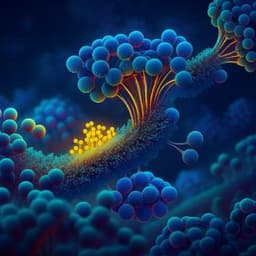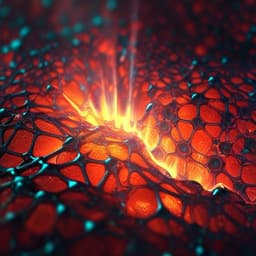
Chemistry
Ultrafast light-activated polymeric nanomotors
J. Wang, H. Wu, et al.
Discover the breakthrough in light-propelled nanomotors developed by Jianhong Wang, Hanglong Wu, and colleagues, where gold nanoparticles enhance motion, achieving speeds of up to 125 µm s⁻¹. These innovative nanomotors enable active cargo delivery into living cells, unlocking new biomedical possibilities!
Playback language: English
Related Publications
Explore these studies to deepen your understanding of the subject.







